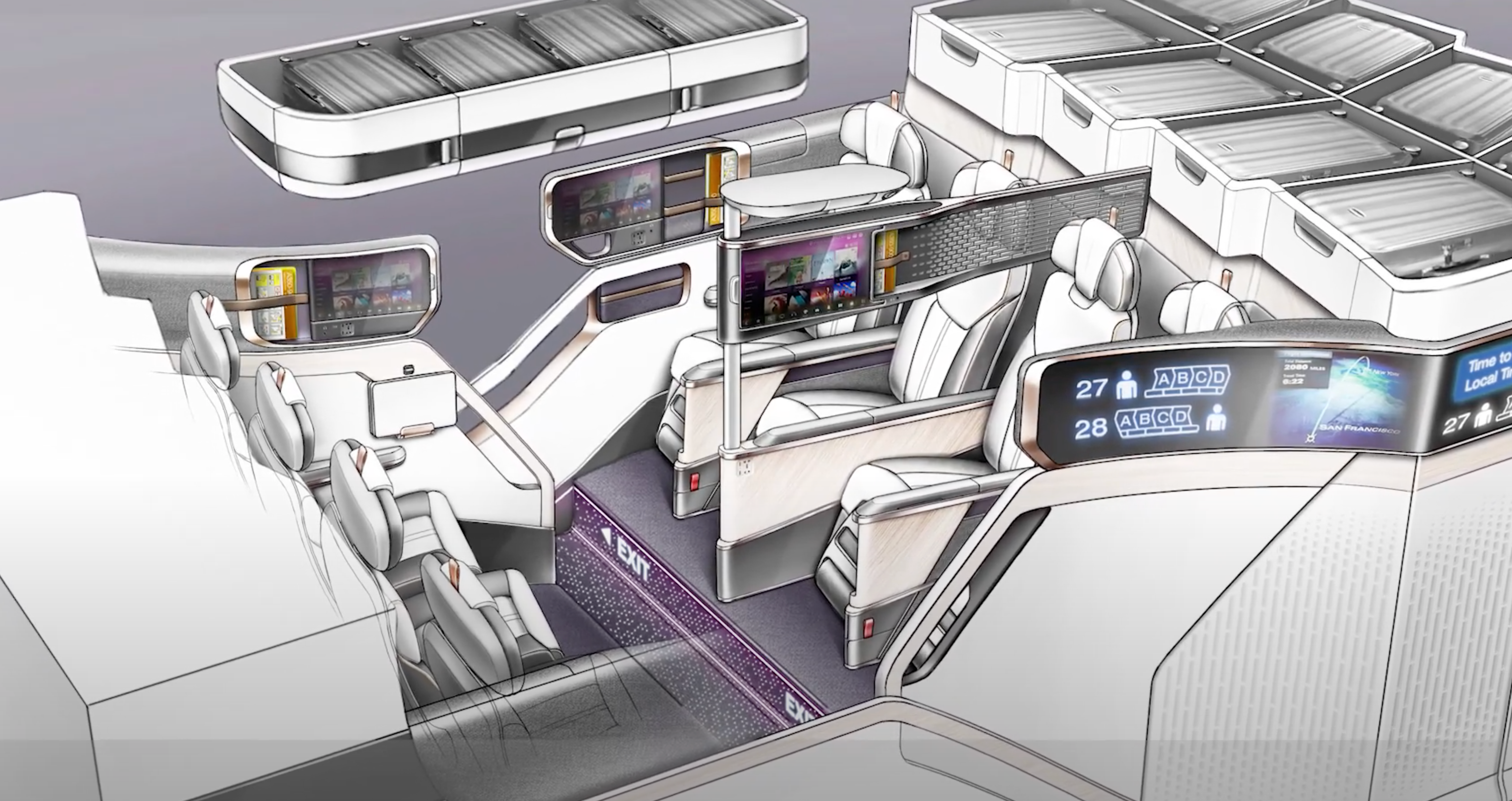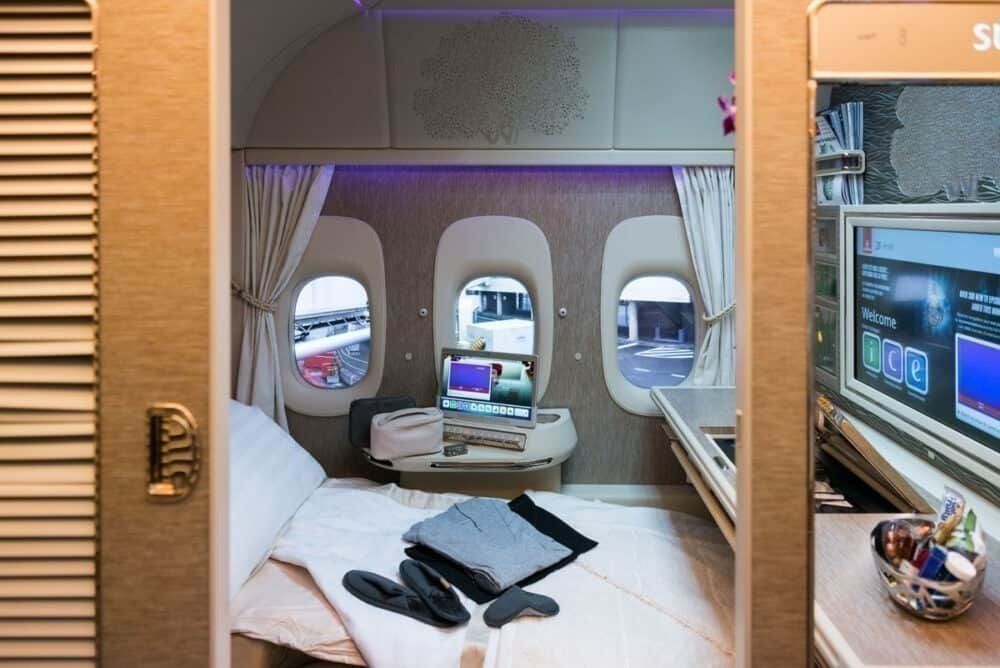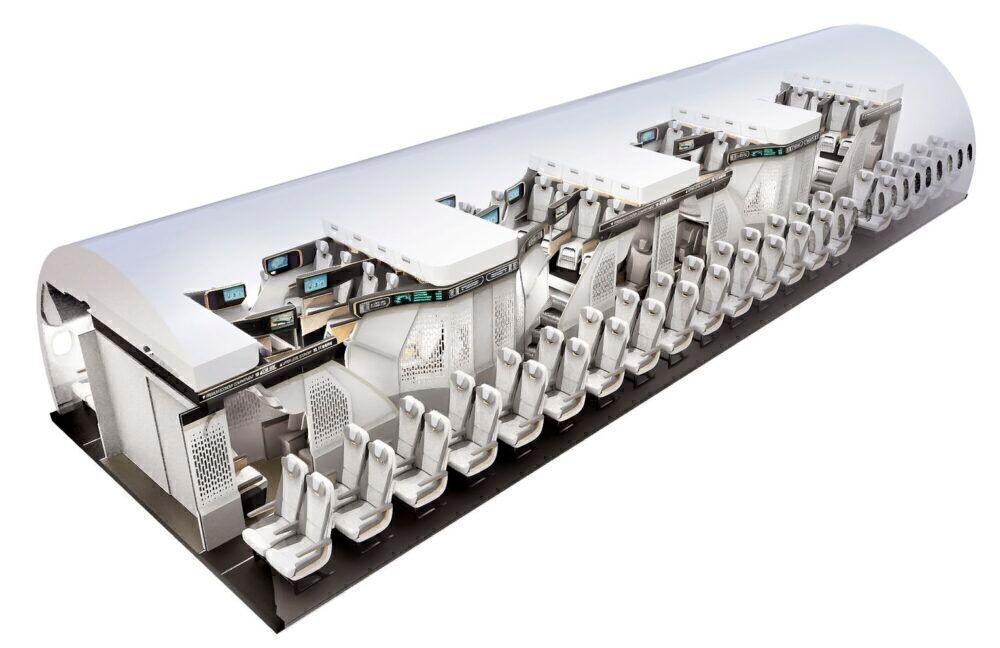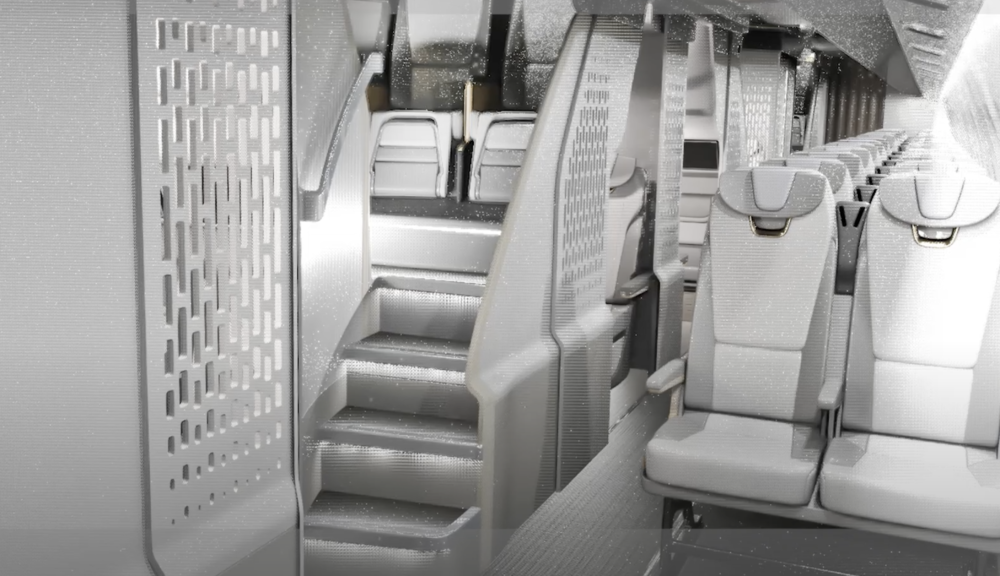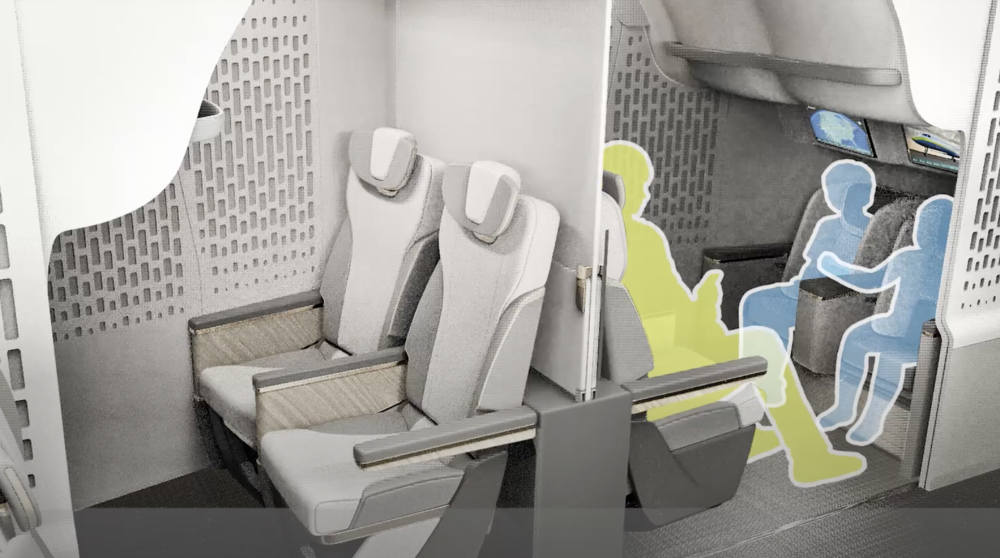Up to now, cabin classes have always stayed very separate. Economy fliers rarely get to see the benefits of first or business class, and while that gives premium passengers plenty of privacy, it can be challenging for airlines in terms of making maximum use of the available space. A concept by South Korean student Sahngseok Lee in partnership with Adient Aerospace suggests that mixing classes together could be a more efficient solution.
Could mixed cabins be the future?
To date, the trend for cabin segregation is pretty much universal. Any airline that flies multiple classes of travelers will usually separate them throughout the length of the plane, with the more premium passengers usually sitting closer to the front. The more forward you get, the more premium the cabin.
But this arrangement lends itself to some challenges too. Having all business class or all first class in a certain segment of the plane means the cabin products need to be tailored to maximize the space available. Both horizontally and laterally, seat and suite designs are constrained by the available floor space, and the airline’s need to maximize that real estate.
Added to this is the lost opportunity to entice passengers out of the cheap seats. For most sporadic fliers who value saving money above comfort, they will never have seen the space and comfort available at the pointy end of the plane, nor the heightened soft product and service that goes with it.
One student set out to change all that, bagging a Crystal Cabin Award for his vision in 2019. In partnership with Adient Aerospace, Sahngseok Lee created a concept that would see all passengers in all classes in the same part of the airplane.
Stay informed: Sign up for our daily and weekly aviation news digests.
1FA
The concept is called ‘1 For All’ or 1FA, and was the brainchild of South Korea’s Hongik University student Sahngseok Lee. Designed in collaboration with experienced cabin architects Adient Aerospace, the concept uses Tetris-like block building to maximize the capacity of the aircraft while offering more choice in terms of seating facilities.
1FA would see all classes mixed together, with more seating options and a double-decker use of space. Economy passengers could find themselves sitting next to first class, or business next to families. Seating areas would be connected by stairs, allowing for better use of space onboard the aircraft.
As well as offering all the usual seating classes, the designer envisioned expanding seat offerings to cater better to certain niches of traveler. For example, he included some four-person berths, more akin to what’s common on trains and some busses than in aviation, which would be perfectly suited to small family groups.
You can hear Sahngseok Lee discussing his concept and some of the key features in the interview below:
While Adient’s 1FA concept won the Crystal Cabin award that year for its innovative design, we’re yet to see anything like this take flight. There are some obvious challenges with bringing this sort of design to market, not least ensuring that evacuation regulations can be adhered to.
Nevertheless, the idea of mixing classes is interesting, and could be something we see more of in the future. New shapes of aircraft will lend themselves to this sort of strategy, enabling more efficient use of space and giving airlines more flexibility.
What do you think about 1FA? Let us know in the comments.

